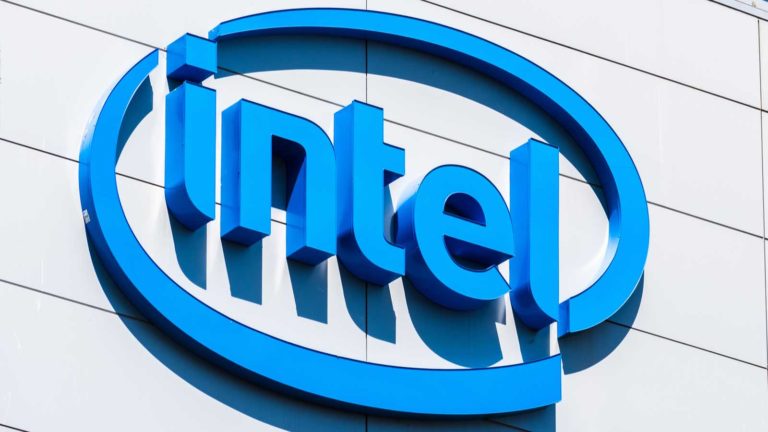Intel (NASDAQ:INTC) stock pleasantly surprised with its Q2 results, earning 13 cents per share on $12.9 billion revenue, with both lines beating expectations.
The company put forward strong guidance for its Q3 earnings, expecting 20 cents per share in net income. Unsurprisingly, these strong results led to a big jump in INTC stock, which surged to about $36.40 in the aftermarket.
Intel’s CEO, Pat Gelsinger, stated that the company foresees ongoing challenges across all business segments until year-end, with server chip sales expected to recover in Q4.
Cloud companies are prioritizing graphics processors for artificial intelligence over Intel’s central processors.
Intel’s finance chief, David Zinsner, attributed the stronger-than-expected report to the company’s progress in cutting costs.
The company has made strides in reducing $3 billion in costs this year and have exited nine lines of business, saving over $1.7 billion annually since Pat Gelsinger rejoined as CEO.
Recent Earnings Report
Intel’s new forward guidance is impressive. The company now expects adjusted earnings of 20 cents per share and revenue of $13.4 billion for Q3, surpassing analyst expectations.
In Q2, Intel reported net income of $1.5 billion, or 35 cents per share, compared to a net loss of $454 million in the same quarter last year. Revenue declined by 15% to $12.9 billion, marking the sixth consecutive quarter of declining sales.
Intel’s gross margin surged to almost 40%, exceeded the company’s previous forecast of 37.5%. Investors seek to expand gross margins despite heavy investments in manufacturing.
The company’s second-quarter results surpassed the management’s earlier forecast, rebounding from a challenging first quarter with slumping PC and server markets and declining demand for central processors.
Intel is determined to achieve a remarkable turnaround by 2026, aiming to match TSMC’s chip-manufacturing prowess.
Their ambitious strategy, known as “five nodes in four years,” involves bidding on producing cutting-edge mobile processors for other companies.
Intel remains confident in meeting these goals, signaling their commitment to stay ahead in the semiconductor industry.
Intel’s Two Major Businesses
Intel operates two distinct businesses. The foundry business is undergoing a revival aided by subsidies under the Inflation Reduction Act, aiming to relocate supply chains from China.
Despite incurring significant losses until its Ohio plants are fully operational, the impact will extend beyond the company itself. Notably, substantial investments are being made in Intel Foundry Services.
This includes $20 billion for new Ohio foundries and up to $36 billion for European ones.
Intel’s acquisition of Tower Semiconductor (NASDAQ:TSEM) also marks its entry into analog chips. Intel is forging many foundry partnerships, showcasing its pivotal role in the semiconductor industry’s evolution.
Intel’s past two decades saw indecision and marketing-driven decisions, leading hardware to lag software orientation. This is the second business I was talking about aside from the foundry.
Although the cloud’s reliance on cheap CPU chips masked this, the shift to faster GPU chips exposed Intel’s shortcomings.
Fixing this will be a time-consuming and uncertain endeavor, potentially causing the company to fall behind in GPUs and lose CPU market share to AMD (NASDAQ:AMD). Consequently, Intel is focusing investments on foundries and analog chips.
What Now?
Intel is positioned to benefit from the AI boom with its Gaudi 2 chips, even though they are currently slower than Nvidia’s (NASDAQ:NVDA) AI chips.
However, Intel’s Gaudi chips are more affordable and faster, potentially closing the gap with Nvidia’s offerings. Some experts believe Intel’s next Gaudi chip could further compete with Nvidia.
Nvidia’s CEO, Jensen Huang, expressed satisfaction with a test of Intel’s manufacturing capabilities. This shows possible chip manufacturing collaborations between the two giants and other chip makers. It solidifies Intel’s position in semiconductor manufacturing.
If the company continues to amplify its long-term growth prospects, while producing solid earnings and revenue growth data in the coming quarters, this is a stock with some serious potential to double from here. Of course, everything will need to go right for this to happen. But I don’t think investors can rule out that potential.
On the date of publication, Chris MacDonald did not have (either directly or indirectly) any positions in the securities mentioned in this article. The opinions expressed in this article are those of the writer, subject to the InvestorPlace.com Publishing Guidelines.

